Three pou have been installed at Kōkihi, a striking and enduring expression of its connection with the Marutūāhu iwi.
4 Mar 2022
Toi o Kōkihi
Ockham’s first partnership with Marutūāhu was rather fittingly called Tuatahi, or ‘The First’. This 119-apartment development in Mt Albert was followed by 95 more at Kōkihi in Waterview (with two more developments, Aroha and Manaaki currently under construction). The design and toi at Kōkihi speak to the historical narratives of Marutūāhu, a deep-felt relationship with whenua, and shared principles that guide us. Let’s look around...
Pou on the corner
Starting with those three wondrous pou. Carved by Tohunga Whakairo Michael Matchitt, the pou embody the kaupapa that guides the partnership behind Kōkihi: “Community, whānau, and whenua”, as Paul Majurey, chair of Marutūāhu puts it.
The tallest of the three pou – that one that gazes out over Great North Road on the right of the group – is a figure perched on what could be the prow of a waka. Appropriately, this pou is named Tauihu, the kupu for that specific part of a canoe. “This pou recognises the many waka – teams of people – who came together to complete Kōkihi, now a home to so many whānau,” Majurey says. Tauihu is a type of tekoteko – a carved figure often affixed to a gable of a wharenui or waka.
Standing at the forefront of the group, the central pou – styled in the form of waka maumahara, a remembrance pillar – wears an ornately carved cloak. “Known as Te Korowai o Te Aroha,” Majurey explains, “this pou represents the love and generosity imbued in Kōkihi.” Or, to put it another way, the buildings of Kōkihi could be thought of as wrapping those inside with love and protection.
The final pou to the left of the trio as you round the corner to Oakley Ave is called Tirohanga Mātārae. Says Majurey: “This pou acknowledges the Tūpuna Maunga of Tāmaki Makaurau, among them most notably the nearby Ōwairaka/Te Ahi Kā a Rakataura (Mt Albert). Tirohanga Mātārae is carved with symbolism that represents the Rangatira – leaders who stand on the Maunga looking out and providing homes, kai, and shelter for the people.
The pou join the other statement features which connect this new building of Tāmaki to its architectural and ancestral past.
"“This tallest of the three pou, Tauihu, recognises the many waka – teams of people – who came together to complete Kōkihi, now a home to so many whānau...”
Paul Majurey - Marutūāhu Chair
Waharoa at the entrance
A waharoa – or arched gateway – marks the entrance to Kōkihi. Familiar to anyone who has set foot on a marae, waharoa are used to demarcate the main entry point to a meeting ground. The one at Kōkihi is made of copper and carved kauri – it currently shines in the light since the opening of the development mid-last year and will develop a deep patina over time as it ages. The waharoa is named Kaiwaka, after the star of Marutūāhu, which heralds the seventh and eighth lunar months: Hakihea and Kohitātea (around the same time of year as December and January).
Tukutuku on the exterior walls
Since its scaffolding came down, Kōkihi has become well-known for the artful designs on its exteriors, visible to anyone coming along Great North Road as they head into Waterview. Although newly built these designs have a deep history: their motifs reference the tukutuku panels of Hotunui, the centuries old Whare Tūpuna of Ngāti Maru, a Marutūāhu tribe. We feel very lucky that this taonga has been generously shared on display at Tāmaki Paenga Hira/Auckland War Memorial Museum – everyone should go see it, it's one of the great wonders of Tāmaki.
Patterns from Hotunui can be seen on the precast concrete panels at Kōkihi, which are pressed with geometric designs that allude to Niho Taniwha – the teeth of the taniwha – and Kaokao – warriors in haka action. The look of the panels shifts with the changing light and weather of Tāmaki Makaurau. We reckon they look especially spectacular after rainfall, as the water evaporates from them.
The brickwork at Kōkihi has also been cleverly interpreted from the tukutuku by one of our architects, Rose Fox, who studied the panels at Hotunui and rewove them in brick. Using a specially devised technique, Fox observed that by offsetting the bricks by a quarter of a brick length, (instead of the usual half brick), a strong pattern could be generated, which when seen from a distance, acts as a striking marker for the buildings.
It is perhaps appropriate then, that one of the patterns, Purupura Whetū, represents many stars in the sky or many people of the iwi – it has a sense of abundance and plenitude. Another pattern is dedicated to the concept of Taki Toru, or two-way communication – wholly befitting of the partnership between Ockham Residential and Marutūāhu Iwi.
Pātiki party in the pool
Lastly, if you peer into the swimming pool at Kōkihi you’ll come across a pātiki (flounder) etched out in tiling along its floor. A motif commonly found in local marae, as the water ripples above it the flat fish appears to quiver with life – it can also be a fun trick to tell young tamariki this and see them puzzle it out.
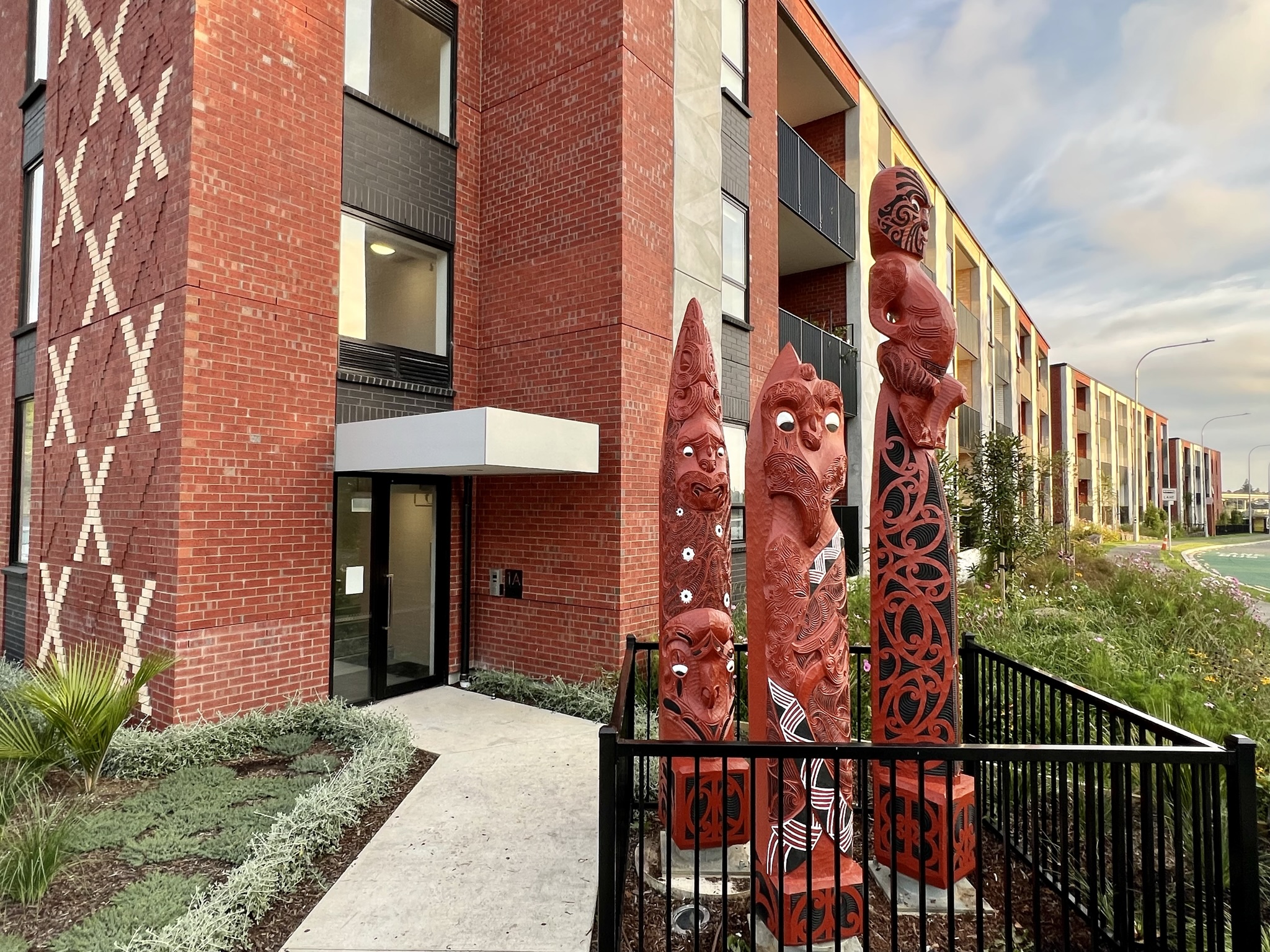
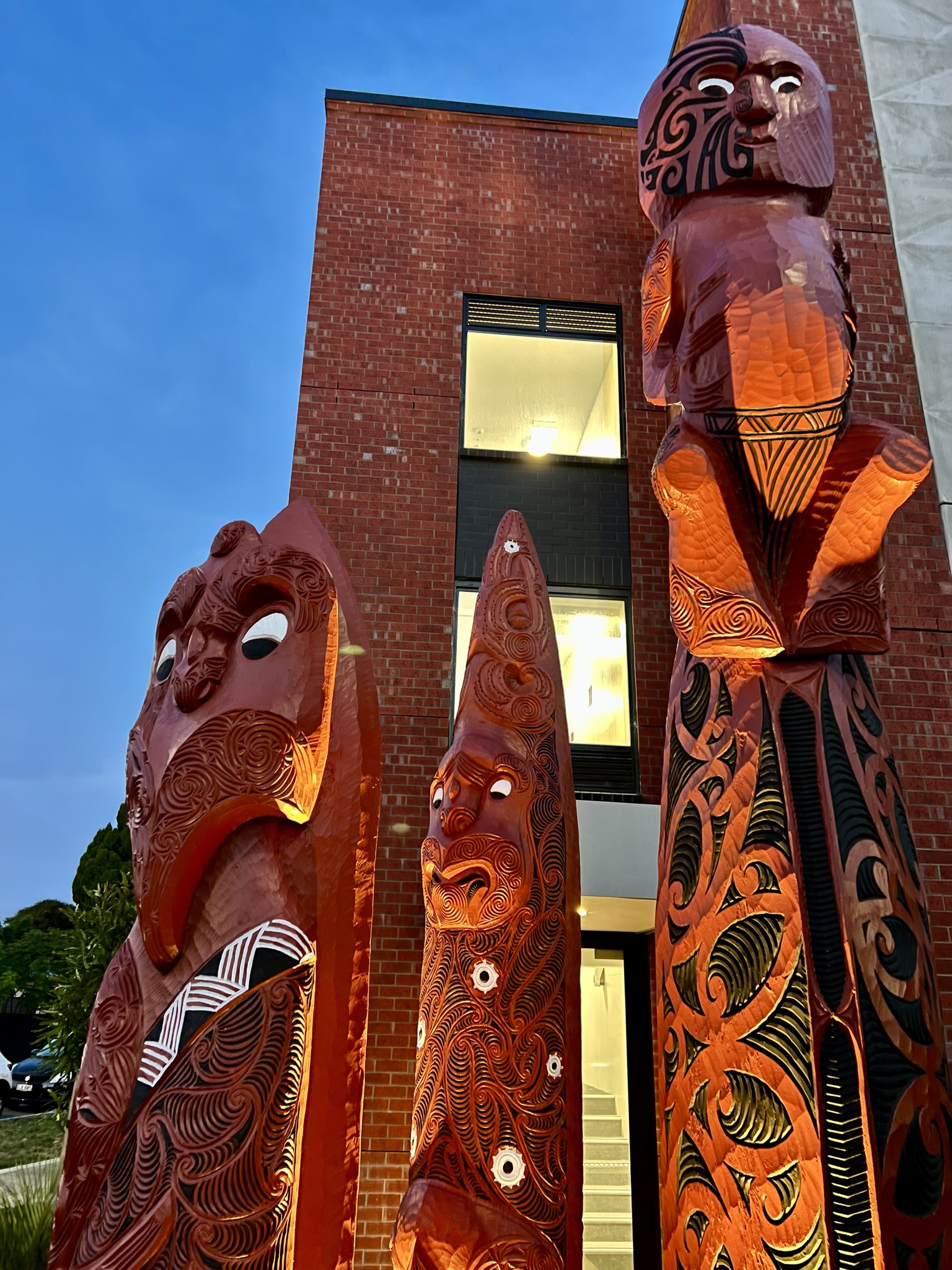
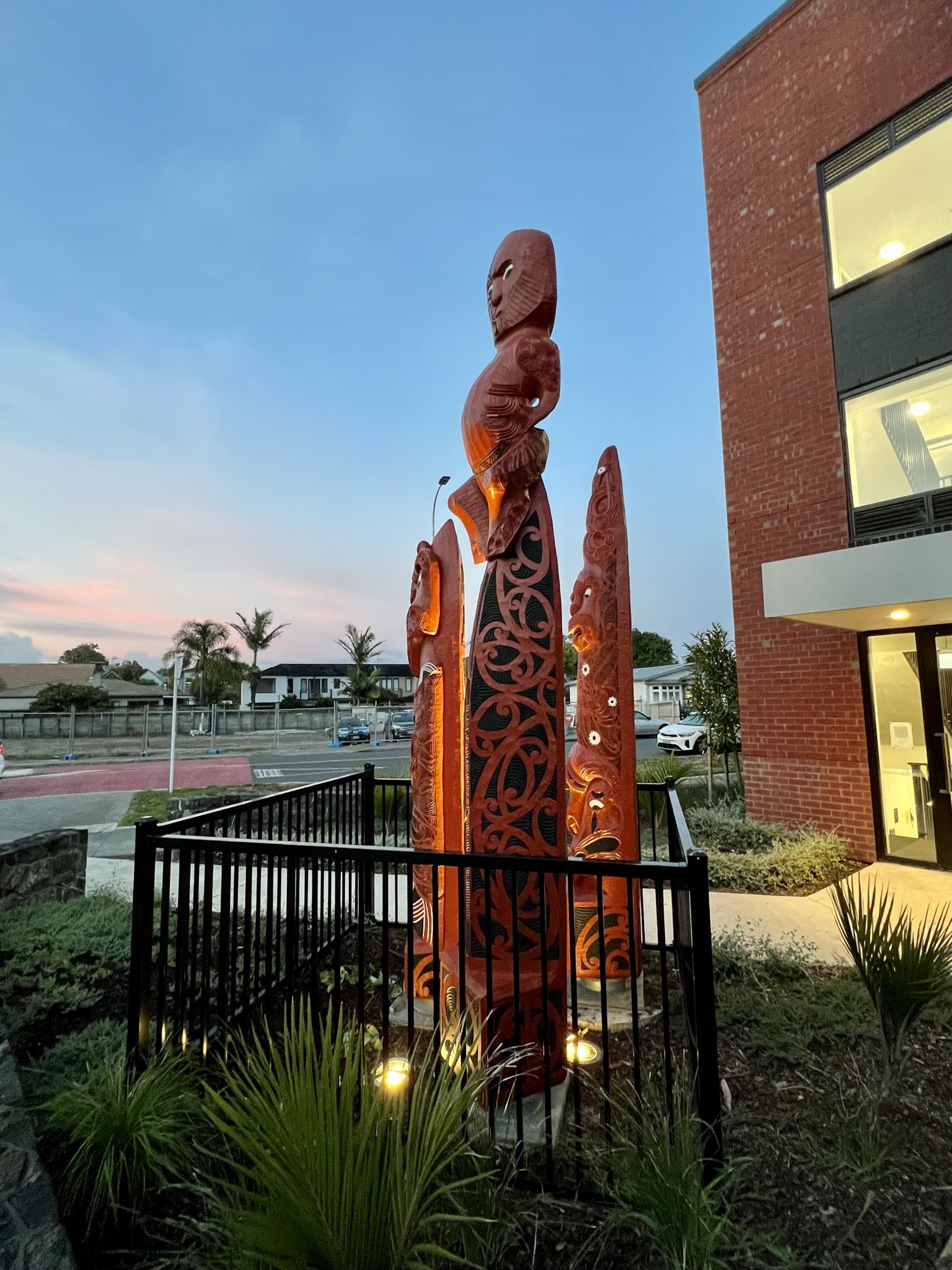
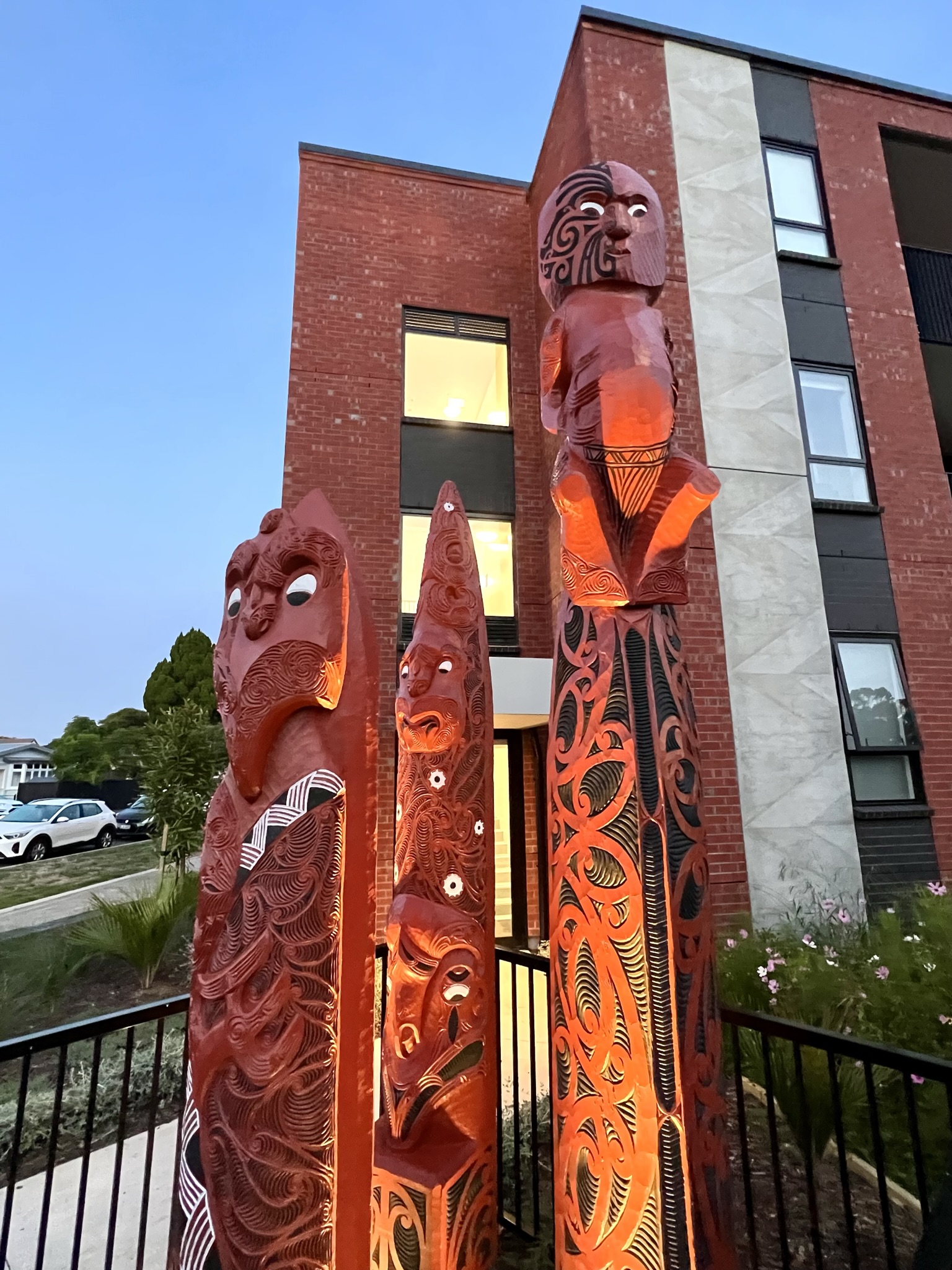
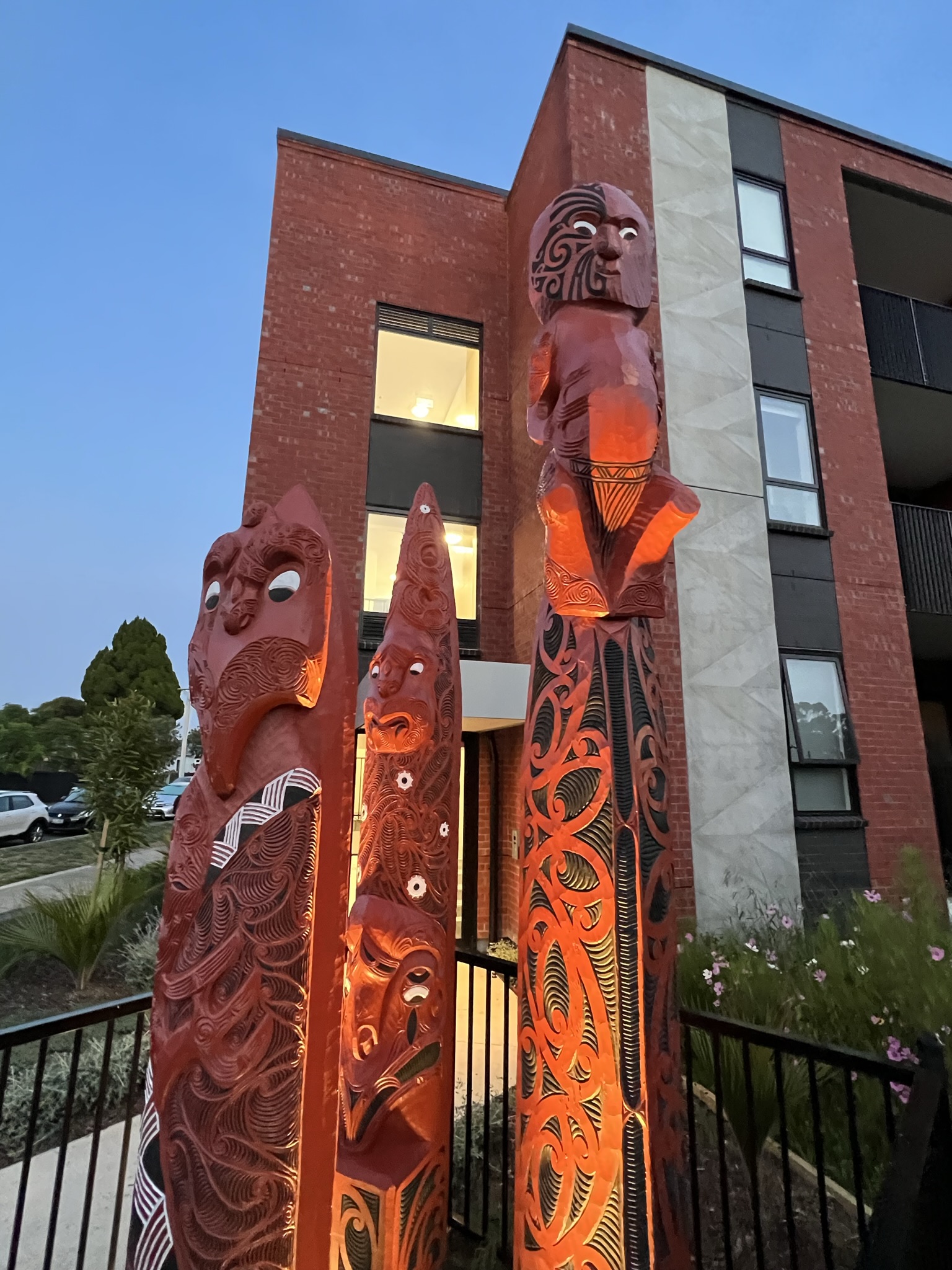
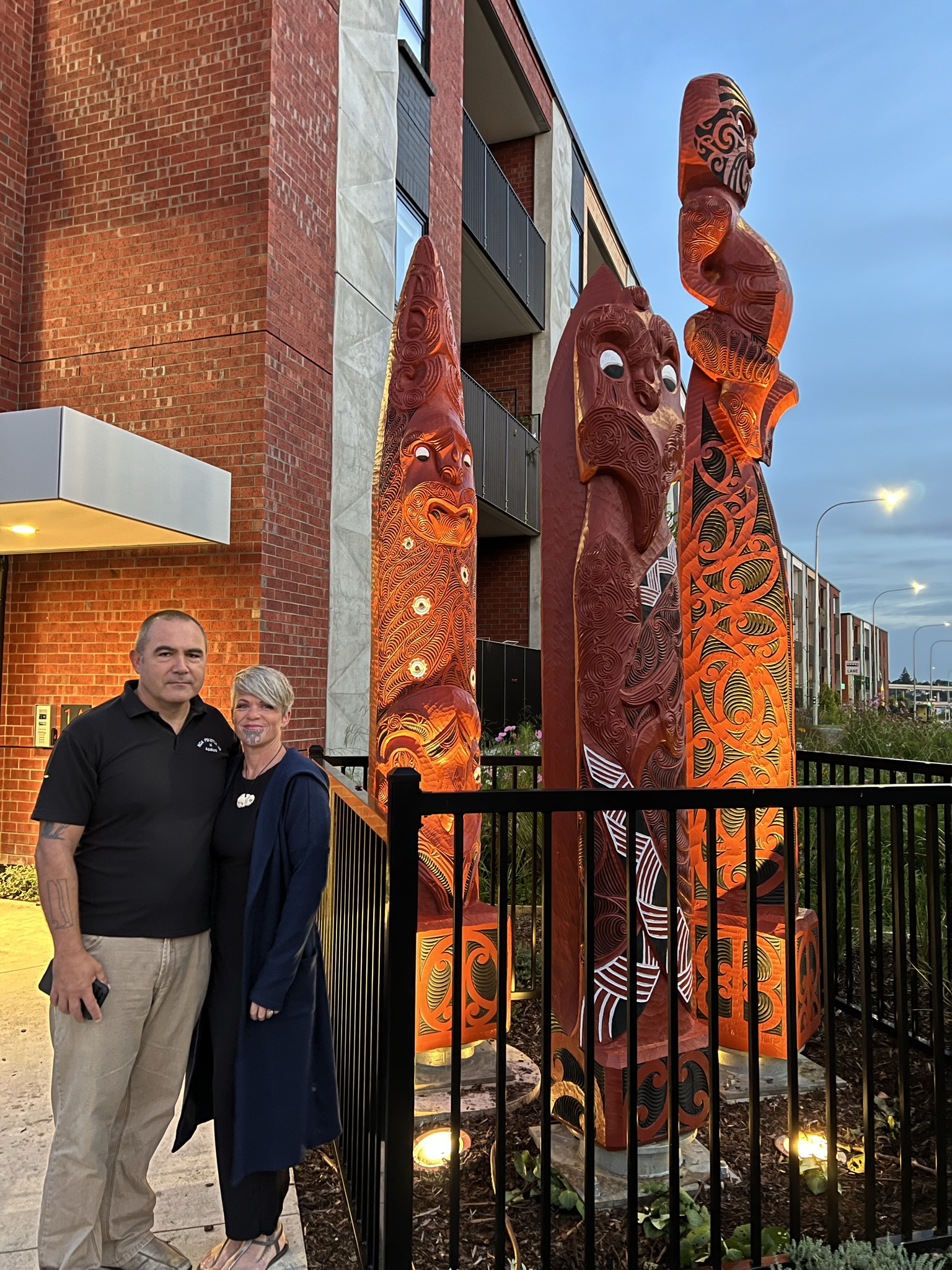
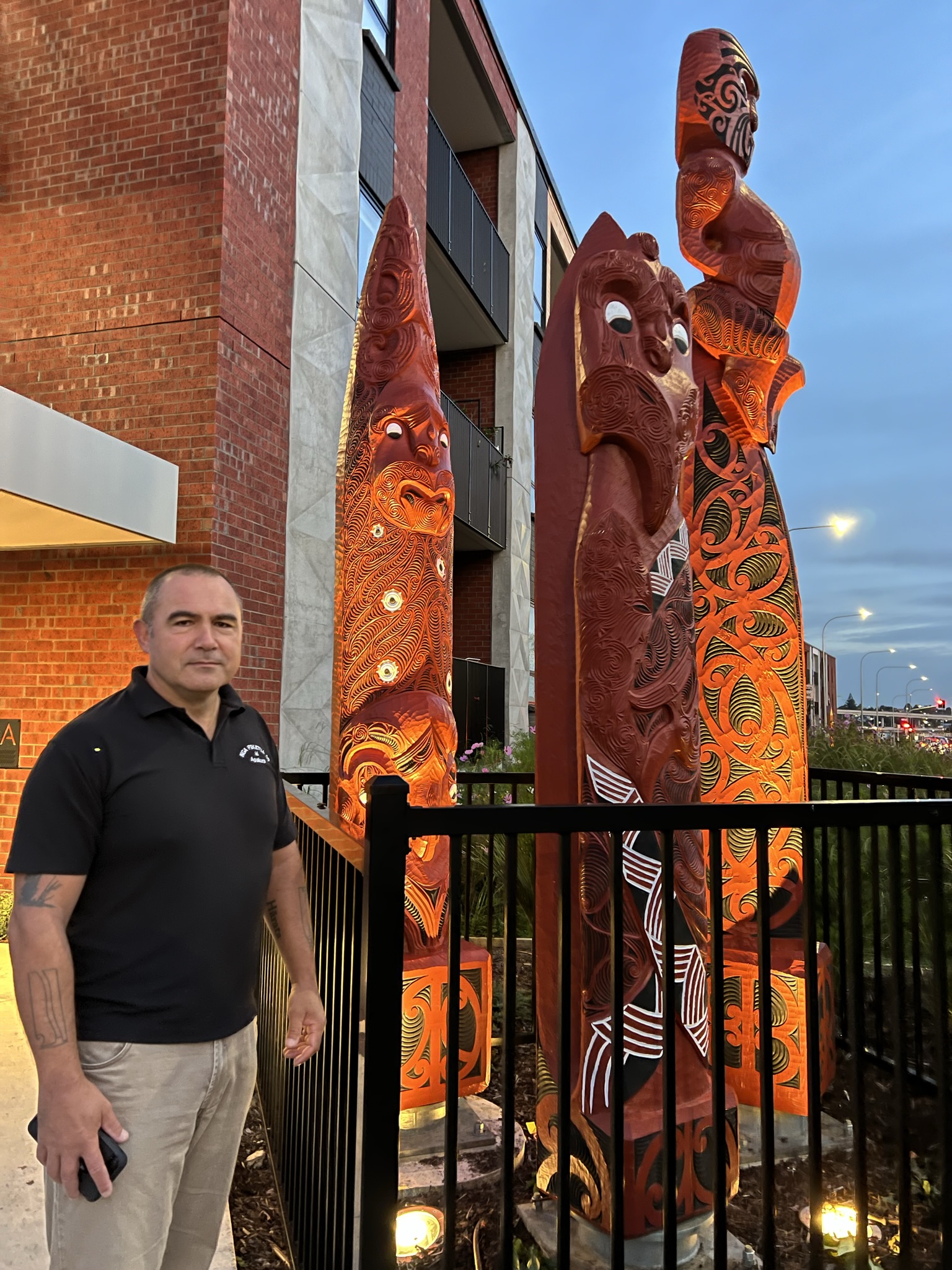
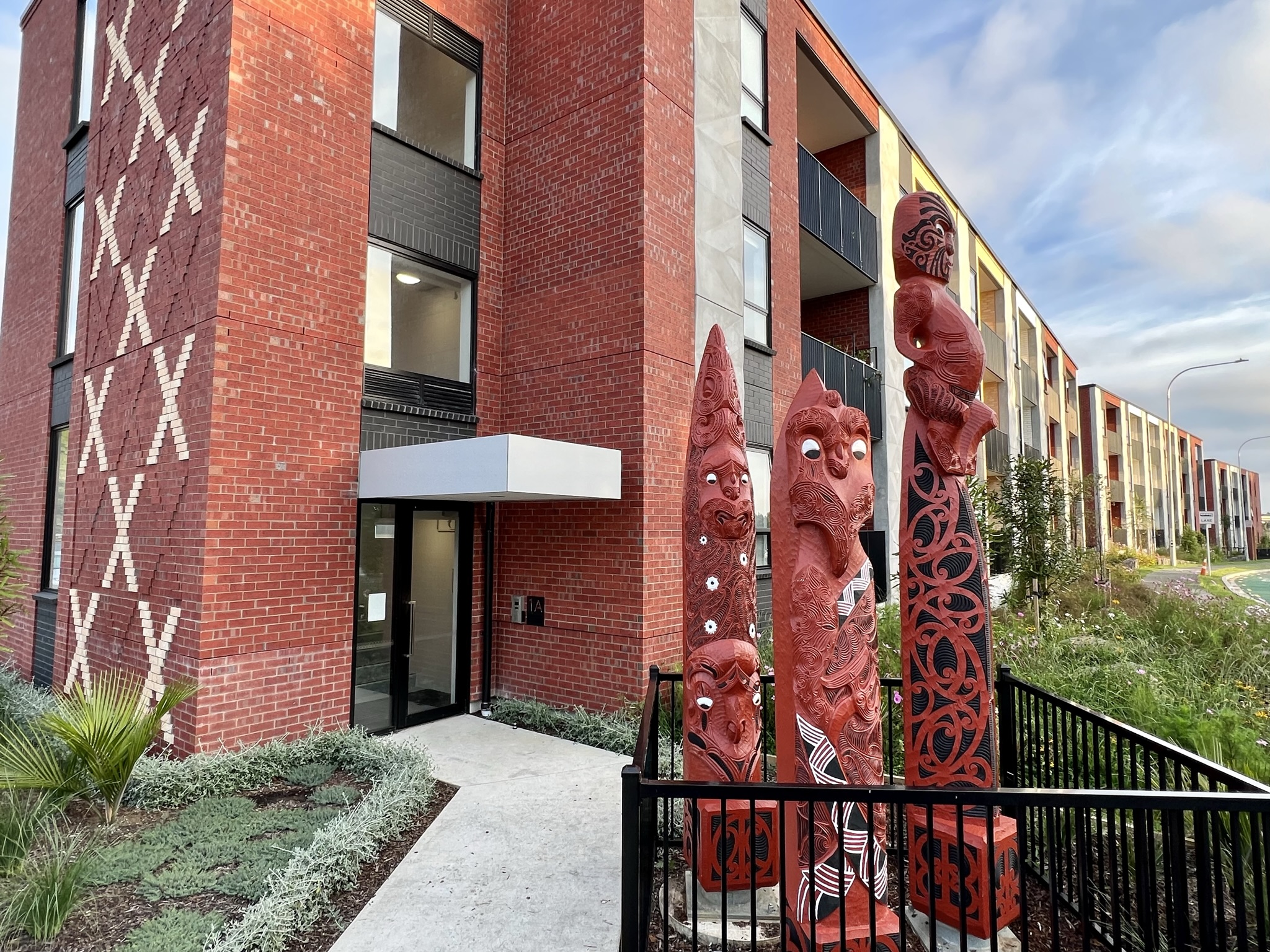
Topics


